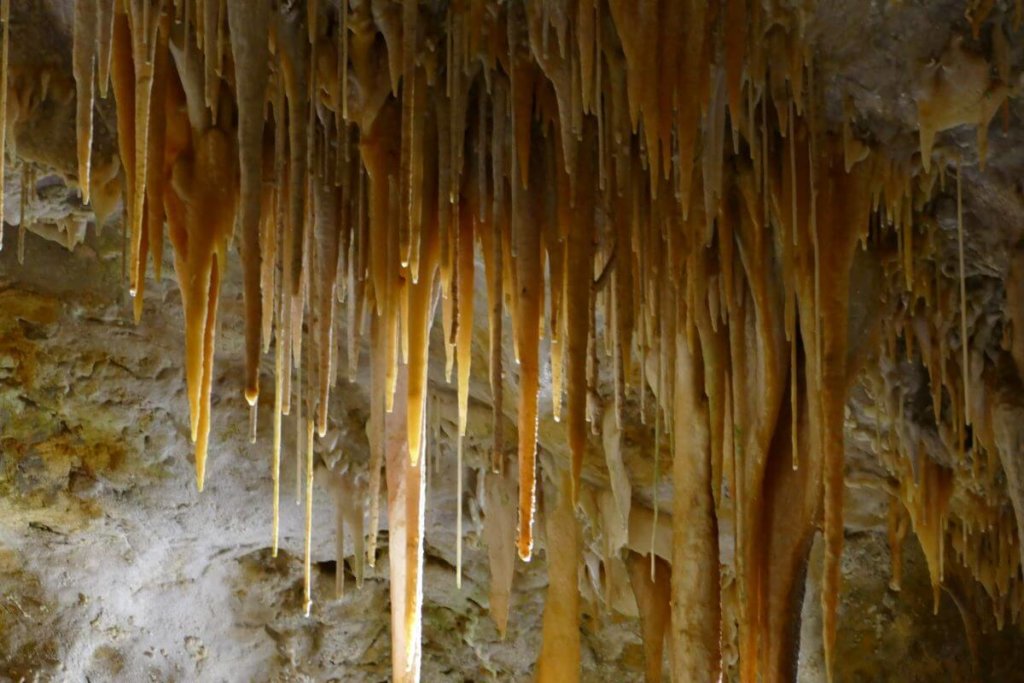Tantanoola Caves Conservation Park is 20 minutes from Mount Gambier on South Australia’s Limestone Coast. It is an ornate single chamber cave with both a great story behind its discovery and an interesting geological history.
You can’t walk down the main street of Mount Gambier without seeing a cave or sinkhole. Cave Gardens, Umpherston Sinkhole, Engelbrecht Cave… the city, and in fact the whole region, is riddled with them. With so many caves to choose from, is it worth paying to see the Tantanoola Caves?
Disclosure: Please Note That Some Links In This Post May Be Affiliate Links, And At No Additional Cost To You, We Earn A Small Commission If You Make A Purchase. Commissions Go Toward Maintaining The Curious Campers Website.

Contents
Tantanoola Caves History
Like so many interesting discoveries, how the Tantanoola Caves were found is a great story. In 1930 Boyce Lane was out hunting for rabbits when his rabbit finding ferret disappeared. After failing to find the ferret, he returned home to get help. A more extensive search located the ferret not down a rabbit hole, but in the cave.
The Lane family ran tours of the cave until it closed in the early 1980s for safety reasons. Today, Parks SA look after the cave and it is a safe, comfortable place to visit. No longer do you enter the cave through a ferret-sized hole. While access is only possible by tour, the cave is open year round and is wheelchair accessible.
The caves also have a fascinating geological history. The area was once a marine environment and fossils of Australian Fur Seals have been found there. As the water receded, land-based animals moved in. Remains of everything from Tassie Devils to a now extinct cow-sized water dwelling mammal similar to a hippo are also on the site.
Read More : Explore More of Mount Gambier’s Sinkholes & Caves

Prices + Opening hours
Tantanoola Caves is open from 10.00 to 3.00 and tour tickets are available at the visitor centre. Prices start from $15.00 Per adult and $38.50 for families. Guided tours run every 30 minutes. You spend 30 minutes in the cave which, for us, seemed like about the right length of time.
If you have a few minutes before your tour, the visitor centre has some interesting displays. There is information about the area’s indigenous history. The region is home to the Bunganditj People. The word Tantanoola is from their language and means ‘windbreak’. Rather than referring to the protection offered by the cave, ‘windbreak’ refers to the line of cliffs that dominate the park.
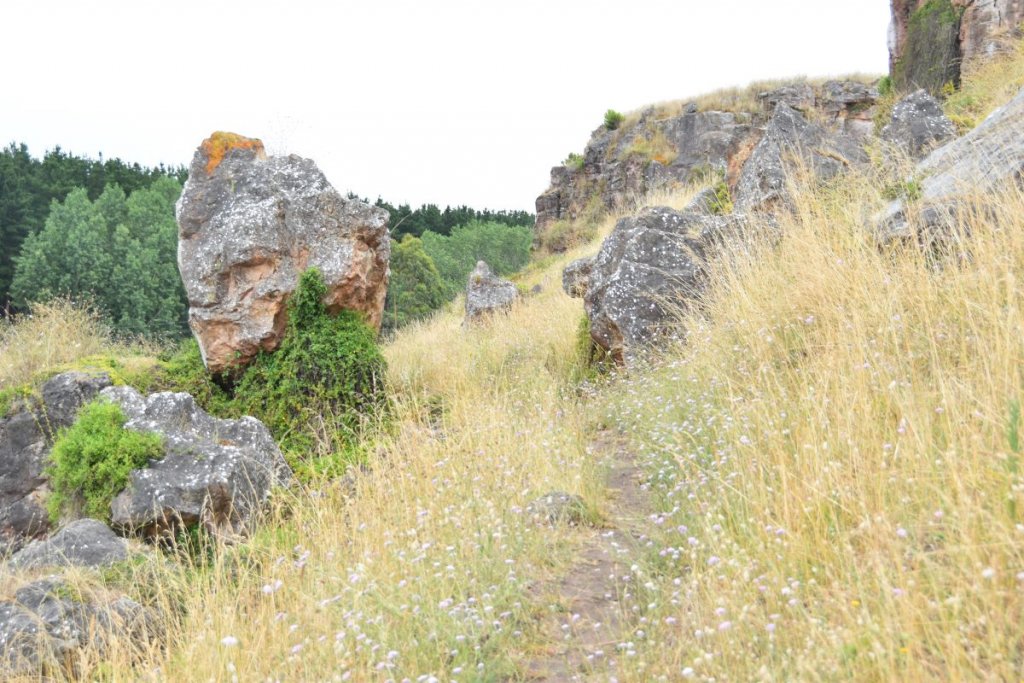
Cliff Top Walking Trail
If you have a bit of time, there is a short, easy walk through the Tantanoola Cave Conservation Park. The 20 minute, 500 metre loop trail takes you along the face of Up and Down Rock. You go past an abandoned quarry and up to the top of the hill and back to the cave entrance in time for your tour.
The path is well worn and takes you past some nice eroded cliff face and between some large rocks to the top of the hill. The line of rock once formed the coastline. From the top, on a good day, you can see beyond the pine forests to the Woakwine wind farm and out to where the coast is today.

Tantanoola Caves Tour
Your guide meets you outside the cave. There are no sneaky peaks of the cave to be had beforehand. The chamber is completely sealed by a big, heavy door. Being able to see nothing kind of adds to the excitement. With a short introduction done, the door opens and in you go – and it’s amazing!
The cave isn’t big, maybe 10m high and 50 metres around, but you are immediately struck by how much there is to look at and that everything glistens. It is a beautiful, wonderous chamber of columns, waves, stalagmites and stalactites. The whole place gleams with the very water that is still, millimetre by millimetre shaping the cave.
After another brief talk you are free to walk around the chamber and explore the ornate decorations. There is a small pool at the centre of the cave and the paths and ramps circle around it taking you past the most impressive features.
It’s not only the formations that catch your eye, but also their colour. The chamber is lit well enough to walk around safely and spotlights shine on some of the more spectacular features. In the light you can see the subtle hews of pinks and browns and orange in the stone.

Look…but Don’t Touch!
The formations are wonderous but what gives them a magical quality is the gleam of moisture. It accentuates the contours and texture of the rock. All you want to do is touch the surface of one of the natural sculptures to have that tactile experience. But touching is a big no no.
The oil on our skin interferes with the chemical processes that take place in the cave. It doesn’t mean you don’t want to touch but I found myself putting my heads in my pockets to resist the temptation.
Read More : Try snorkelling at Piccaninnie Ponds
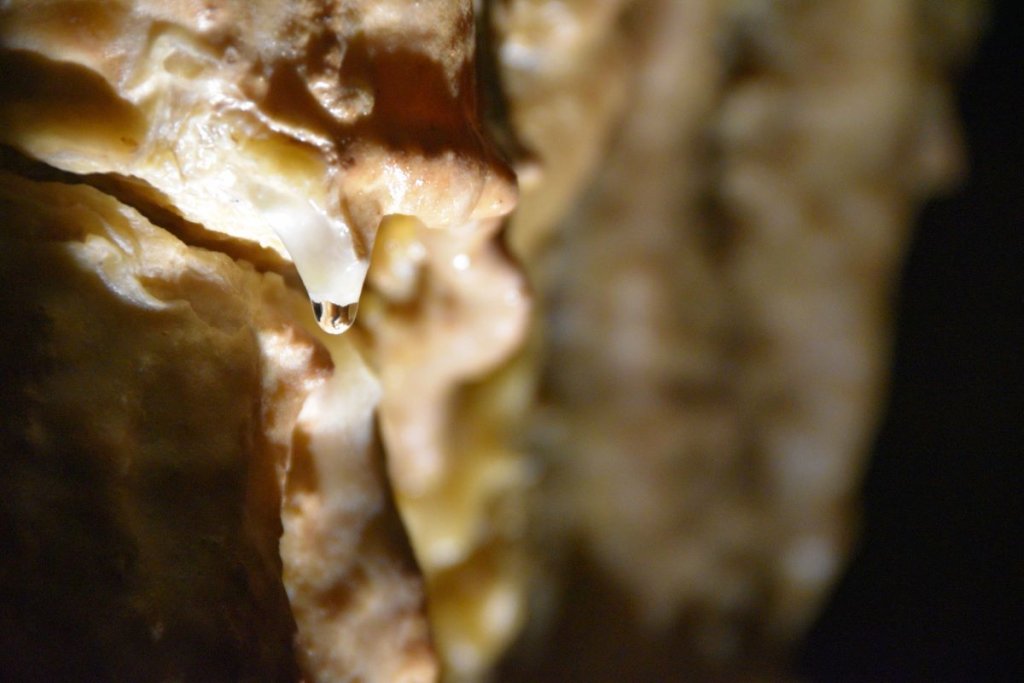
A Work in Progress
Not long after the cave’s discovery, the ends of a couple of the stalactites were cut off and souvenired. It has allowed visitors to get an idea of how long it takes caves like this to form. At the end of the sliced stalactites, you can see a jellybean-sized bud of regrowth – the fruit of 90 years ‘work’.
Our guide points out some spots on the walkways where persistent dripping is creating the smallest of new stalagmites on the floor of the cave. It was fascinating to see and reflect on what we were walking through is not a finished product. The place is still changing with the coming and going of every tour group.
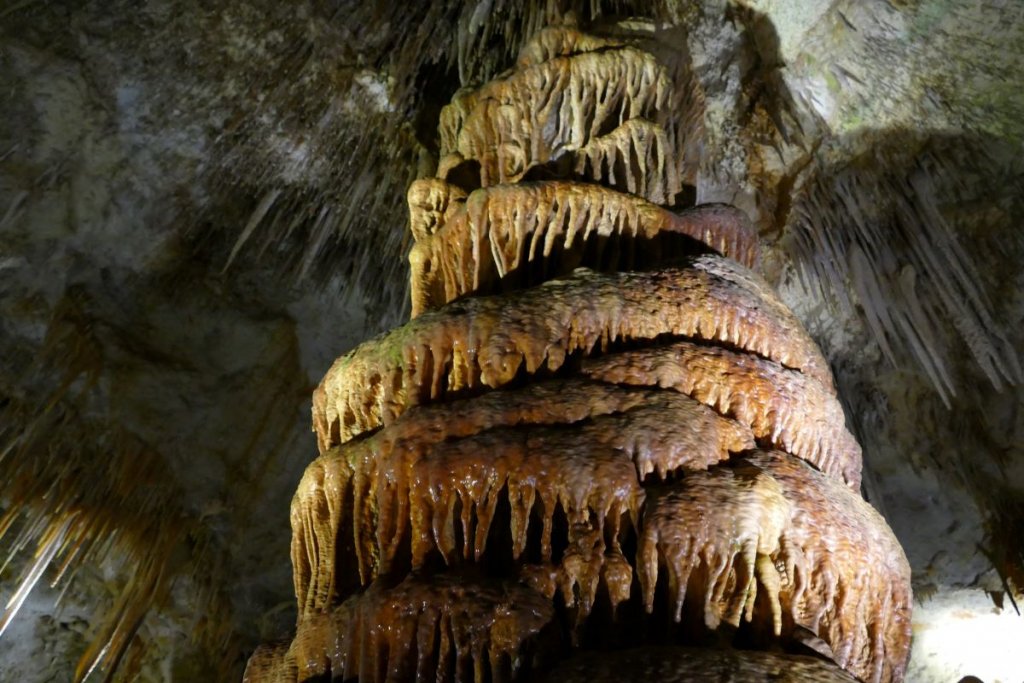
Is it Value for Money?
We have seen mixed reviews for the Tantanoola Caves. Is the tour good value for money? Are there ‘better’ caves elsewhere? There is no shortage of caves in the southeast to see including the much bigger Naracoorte Caves.
There might only be one small chamber at the Tantanoola caves, and you are only in there for 30 minutes, but it packs a punch. With a 2 + 2 family ticket costing a bit over $30 and for how easy it is to get around, it is a memorable family activity.
We couldn’t believe how much there was to see in a small area and thought the cave was worth the cost of entry. It’s not the sort of environment you can generally see every day, and the guides are knowledgeable and passionate. When you are in Mount Gambier, it’s worth putting the Tantanoola Caves on your list of things to do.
Read More : Things to do in Mount Gambier
National Park Pass
You do not need a national park pass to visit Tantanoola Caves.
Dogs are not permitted at Tantanoola Caves.
Allow 60 minutes to do the short walk and cave tour.
Entrance to the conservation park and walk, is free of charge, however, fees apply for cave tours. You can even hire the caves as a wedding venue!
Click here to find out more about visiting Tantanoola Caves Conservation Park.
Mt Gambier Accommodation
- Pine Country Caravan Park – Choose from a glamping tent, bungalow or campsite for your stay
- The Customs House – B&B in Port Mac Donnell with fully self contained unit with ensuite
- The Old Mount Gambier Gaol – Unique accommodation in a cell or cottage. Shared kitchen & bathroom
- Blue Lake Holiday Park – Located alongside the Blue Lake choose from a cabins, villas or campsites
If you enjoyed this story you might also like:
Plan a Trip to Robe | Visit the Adelaide Hills | Free Camping in South Australia
Like it? Pin it for Later…
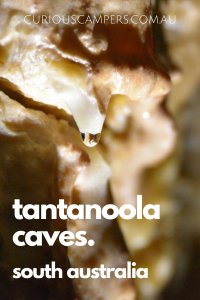
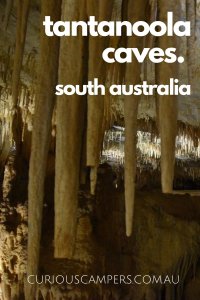



500 THINGS TO DO
Join our mailing list and receive our Free Top 500 things to do in Australia. If you love the Australian Outdoors download this list and keep it handy when you are planning a weekend away or a road trip around Australia.

